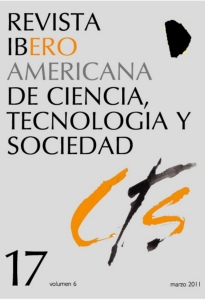La investigación científica contribuyendo a la inclusión social
DOI:
https://doi.org/10.52712/issn.1850-0013-762Palavras-chave:
inclusión social, investigación científica, sistemaResumo
El presente trabajo explora la factibilidad de aportar a la resolución de problemas asociados a la inclusión social con la contribución -entre otros factores- de la investigación científica. Para ello plantea una propuesta analítica que consiste, por una parte, en la identificación sistémica del conjunto de actores involucrados en el proceso y, por otra, en el seguimiento del recorrido que va desde la existencia de un problema de inclusión social hasta su resolución. Finalmente se ilustra y pone a prueba la propuesta analítica con casos concretos de la experiencia uruguaya.
Downloads
Referências
GEIDO, D.; FAILACHE, H. y SIMINI, F. (2007): “BiliLED low cost neonatal phototherapy, from prototype to industry”, Journal of Physics: Conference Series 90. Disponible en: http://iopscience.iop.org/1742-6596/90/1/012024/pdf/jpconf7_90_012024.pdf.
HIRSCHMAN, A. (1970): Exit, Voice and Loyalty, Londres, Harvard University Press.
NELSON, R. (1974): “Intellectualizing about the Moon-Guetto Methafor: A Study of the Current Malaise of Rational Analysis of Social Problems”, Policy Sciences, nº 5, pp. 375-414.
SÁBATO, J. y BOTANA, N. (1968): “La ciencia y la tecnología en el desarrollo futuro de América Latina”, INTAL - Revista Integración y Comercio, Buenos Aires, año 1, nº 3, pp. 15-36.
SEN, A. (2004): “Why We Should Preserve the Spotted Owl”, London Review of Books, vol. 3, nº 26, pp. 1-4. Disponible en:
http://www.geo.unizh.ch/~backhaus/GLOPP-CD/A2/en/multimedia/A2_amartya_sen.pdf. Última fecha de acceso: 13 de junio de 2010.
SEN, A. (2000): Social exclusion: Concept, application, and scrutiny, Manila, Asian Development Bank.
VIGORITO, A. (2009): “El aporte de las ciencias sociales a las políticas para la inclusión social. Las experiencias del PANES y del Plan de Emergencia”, ponencia presentada en el FIA, 2009. Disponible en:
Downloads
Publicado
Como Citar
Edição
Seção
Licença
Copyright (c) 2024 CC Attribution 4.0

Este trabalho está licenciado sob uma licença Creative Commons Attribution 4.0 International License.
Todas os números de CTS e seus artigos individuais estão sob uma licença CC-BY.
Desde 2007, a CTS proporciona acesso livre, aberto e gratuito a todos seus conteúdos, incluídos o arquivo completo da edição quadrimestral e os diversos produtos apresentados na plataforma eletrônica. Esta decisão é baseada no entendimento de que fornecer acesso livre aos materiais publicados ajuda a ter uma maior e melhor troca de conhecimentos.
Por sua vez, em se tratando da edição quadrimestral, a revista permite aos repositórios institucionais e temáticos, bem como aos sites pessoais, o autoarquivo dos artigos na versão post-print ou versão editorial, logo após da publicação da versão definitiva de cada número e sob a condição de incorporar ao autoarquivo um link direcionado à fonte original.











